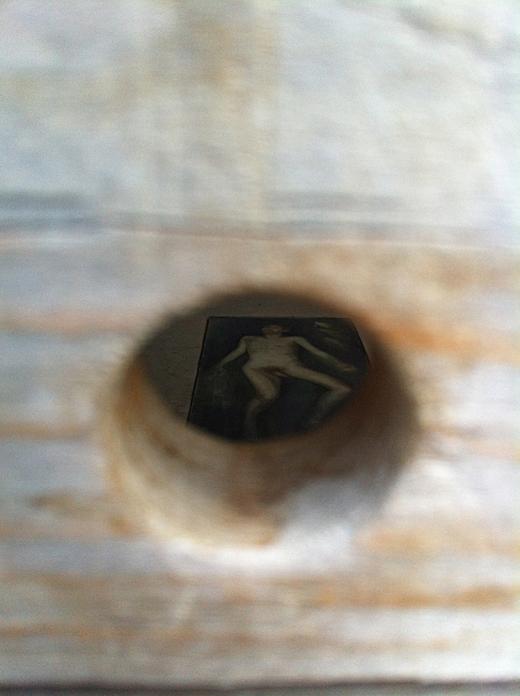Have You Met: Hester Oerlemans of OZEAN
Have You Met: Hester Oerlemans of OZEAN

Within two days of arriving in Berlin, I had my first assignment: cover the opening of WONDERHUT at OZEAN. I didn't realize Germans liked caps locks so much, I thought to myself as I biked down to Kreuzberg and into a small courtyard hidden off of a sidestreet, swirling in circles as I tried to figure out if I incorrectly copied down the address.
Anyone who has been to OZEAN knows of the gallery's balance of understated presence and innovative space. Back in 2010, Hester Oerlemans added a fourth wall to a pre-existing open-faced structure, creating a gallery from a garage. What was intended as a one-show project blossomed into one of Kreuzberg's most unique artist-run initiatives: viewers can only view the art in OZEAN through a thick gate. I sat down with Hester to discuss OZEAN's story.
How long have you been in Berlin?
Thirteen years. It started when I got the scholarship for a year to live and work in Kunstlerhaus Bethanien, so that's where I started. I had a studio in Copenhagen. After the year was finished in Berlin, I thought, "Maybe I should stay a little bit longer—I still have work to do. I haven't discovered everything…OK, I'll stay here a little bit longer."
How did OZEAN start?
I had a studio here [in Kreuzberg], and there came the question: does somebody have an idea for something to do in this area, or in this open garage? It wasn't closed like it is now. I had the idea for one exhibition, and that was to build a wooden wall, drill holes in it, and put artwork behind it so all you can see is through the holes. I wanted to do that because in Berlin, you have group exhibitions in cafés, in galleries — a lot of work you see is with so many others works that sometimes I can't decide what's the good work or the bad work. I thought it would be nice to make an exhibition — a group exhibition — where you can only see one work — you can isolate it and see it better.
For the gate, I used to have a space in Holland some time ago also like OZEAN — I did that when I quit the Academie. I knew a little bit how to do it, so I said, "OK, maybe it IS more easy to do something like that!" Having my own space, I didn't want to wait there all day, so that is why I came up with the idea for the gate. You can always go and visit, but it doesn't need somebody to sit there.
That concept of space is also there: how would it be to make an exhibition in a space that you can't go in? It's an expectation for the artist to get together and think, "OK, how can I present my work in a space like this?" Now I'm developing and researching that question with the artists. I don't think I'm a curator. For me, the goal is to work together with other artists.

How did your background as a practicing artist inform OZEAN as a space and as a practice?
I'm always interested in working together with the artists! For me, it's not about sitting in my studio and making work. I would like to have dialogues with artists about how they think and how they work in a space. "How can we work together?"
For me, OZEAN as a space is an opportunity to do something else other than how you normally work.
Are there any really memorable shows from OZEAN's past?
There were a lot of weird shows… That's too difficult. The weirdest show is, in a way, the space itself. I don't like to say, "That show - I liked him," or, "That show… I didn't like it." But I can say that I like shows where people are really struggling with the space. The space is like a canvas. I like it when OZEAN is really touched: they drill a hole in the roof and they put something through it… OZEAN is becoming a sculpture, and that's what I like the most.
So, maybe the way OZEAN looks is, for me, maybe the weirdest show. I'm always hoping that I will have a show that will be far beyond my own imagination. Sometimes it's there, and sometimes it's not.